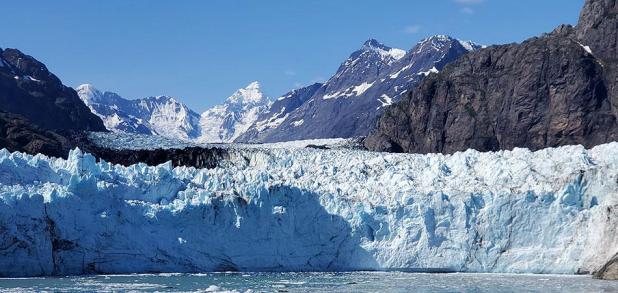
Margerie Glacier in Glacier Bay, Alaska
—Diane Miller Fears photo
How scientists know the climate is changing
Climate change is a complex subject that can easily confound. Due to its complexity, climate change has led many people to ask questions, including how scientists can be so certain that the climate is changing in such a way as to threaten the planet’s ability to remain a healthy place for human life.
According to the U.S. Geological Survey, the instrumental record of climate change is derived from thousands of temperature and precipitation recording stations around the world. These recording stations have helped scientists identify trends in the climate record and changes in physical and biological systems that have convinced them the Earth’s climate is changing.
What are some of the signs of climate change?
Scientists have been projecting outcomes of Earth’s changing climate for decades. But climate change isn’t just about the future, and the USGS notes that various signs of climate change are already noticeable.
—Temperatures are rising across the globe, an increase the USGS indicates is a byproduct of greenhouse gases trapping more heat in the atmosphere.
The U.S. Environmental Protection Agency notes that greenhouse gases are gases that trap heat in the atmosphere. As these gases, which include carbon dioxide, methane and nitrous oxide, trap more heat in the atmosphere, they make the planet warmer, thus changing its climate.
—Droughts are becoming longer and more extreme. The Center for Climate and Energy Solutions notes that warmer temperatures enhance evaporation. Evaporation reduces surface water, thereby drying out soils and vegetation. As a result, periods with low precipitation end up being drier than they would be in cooler conditions, leading to longer, more extreme periods of drought.
—The increased severity of tropical storms is another indicator of climate change. Scientists have linked that increased severity to warmer ocean temperatures.
The Environmental Defense Fund notes that storms pull in more water vapor and heat as they travel across warmer oceans. That leads to stronger winds, heavier rainfall and more flooding once the storms reach land.
—Glaciers are melting at a faster pace over the previous 20 years. A study published in the journal Nature in 2021 revealed that the speed at which the world’s glaciers are melting has nearly doubled over the last two decades.
The study reported that glaciers are now losing 267 gigatons of ice per year, which is responsible for 21% of the world’s sea level rise. Researchers reached their conclusions after utilizing historical NASA satellite data and new statistical methods, ultimately creating what scientists feel is the most complete assessment of glacier loss yet produced.
Climate change poses a considerable challenge. Scientists continue to learn more about the changing climate and such knowledge can inform policies to confront the challenge.
